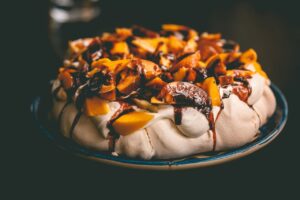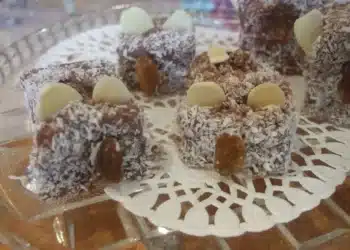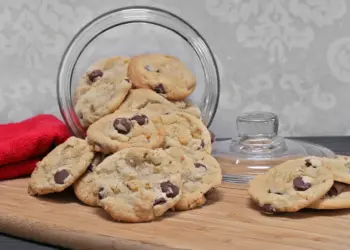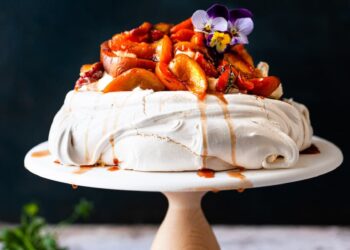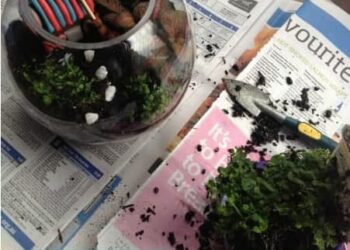Any budding Australian baker should have a classic pavlova. This recipe is perfect for entertaining guests and feeding large crowds. These tips will help you make a pavlova that is perfect every time.
Ingredients
- 6 Egg Whites
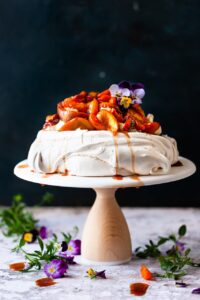
- Sugar, 1 1/2 cups
- White sugar, 1/2 cup
- 2 tablespoons cornflour
- Lemon juice, 2 teaspoons
- 1 cup cream *to decorate
- 1 cup mixed berries *to decorate
Method
- Line a baking sheet with baking paper.
- Beat the egg whites until stiff peaks are formed.
- Add the caster to the egg whites gradually and continue mixing until the mixture is glossy and thick.
- Combine white sugar and cornflour in a separate bowl.
- Fold the sugar mixture and lemon into the egg white mixture.
- Place mixture onto baking tray. Form into a circular shape, about the size of a dinner plate.
- Bake at 150C for 45 to 1 hour (fan-forced). When it feels dry, the cake is ready. Let the cake cool down in the oven, with the door slightly ajar.
- Decorate with your favorite toppings and cream once cooled.
EQUIPMENT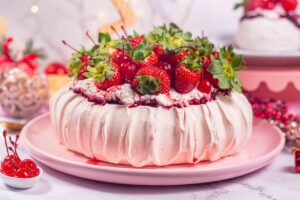
- One baking tray
- 1 baking paper
- 1 Bowl
NOTES
It may crack, but the cream can cover this. You can add blackberries, blueberries and raspberries. Or, you can use sliced strawberries, Flakes and Peppermint Crisps.
How To Make The Best Pavlova
Pavlova, a classic Australian dessert, is something that bakers all over the country make around Christmas or summertime. This dessert is a crowd-pleaser, thanks to its crisp, light base, lashings or cream, and lots of fruit. It is loved by both hosts and guests, because it’s so easy to make. If you follow these tips then there is no need to worry about sunken tops, under whipped egg whites or weeping cracked. Make your pav a breeze by taking note of these tips!
Pavlova Frequently Asked Question
You can use old eggs to make meringue.
Fresh eggs are best. Fresh eggs produce a foam that is superior to older eggs. The eggs are more acidic which helps the proteins to bind together, creating a foam that is more stable. You can also use frozen (and defrosted), as long as the egg whites were frozen when they were fresh. Older egg whites can be used, but they will not whip as well and the meringue may not be as stable.
Is it better to use cold eggs or room temperature for pavlovas?
The egg whites should be at room temperature to create a meringue that is more stable and lighter. Remove eggs from the fridge 30-60 mins before use. You can easily separate eggs when they are cold.
What kind of sugar is used in meringue and what type of meringue do you make?
It is possible to use white sugar or caster for the meringue. Caster sugar, however, is more convenient. The smaller crystals dissolve more easily and quickly into the egg whites. Sugar must be completely dissolved in the egg whites to make a pavlova. Rub some meringue with your thumb and finger to check. It should feel smooth. Continue beating it until it is smooth.
Fat is the enemy to meringue
If you have any fats or oils on your equipment, they will prevent your egg whites frothing and creating a good meringue. Use a mixing bowl made of glass or stainless steel that is easily cleaned. Plastic mixing bowls tend to stick to fats and oils.
Wash your bowl with hot, soapy water to ensure they are clean. You can also clean them with white vinegar prior to adding the eggwhites.
Avoid getting yolks into the whites when separating eggs. To avoid yolk traces, it’s best to separate the eggs individually and then add the egg whites one by one to the main bowl.
Avoid making pavlova when it’s humid.
Sugar is a major ingredient in Pavlova, and it absorbs moisture both from the other ingredients as well as the air.
If you make a meringue during a humid day, it can lead to a pavlova that is weeping or soft. Use a meringue recipe that includes cornflour to reduce the chances of this occurring. After baking, ensure that the pavlova is allowed to cool completely in the oven. After cooling, store the pavlova in an airtight container stored in a dry cupboard or pantry. Do not store pavlova with other baked goods as it will absorb the moisture.
Add cornflour to the pavlova batter for a more stable product.
The correct proportion of these ingredients will create a stable foam, which in turn can help prevent problems. The cornflour used in baking is to stabilise egg whites, reducing the likelihood of pavlovas weeping. As a rough guide, use approximately a teaspoon of cornflour. One teaspoon of cornflour per egg white. If you use too much cornflour, your pavlova will have a chalky texture.
Adding a small amount of acid, such as lemon juice or white vinegar (about one teaspoon for four egg whites), can help to prevent your pavlova from collapsing due to over beating.
How fast should you whisk egg whites?
Use the whisk attachment on a stand-mixer to incorporate the maximum amount of air. Mix the egg whites at medium-high speed, increasing the speed when they become frothy. These speeds produce a foamy egg white with tiny bubbles. This is easily shaped into a pavlova.
When should I start adding sugar to egg whites?
The time required to whip egg whites to foam will be doubled if you add sugar to the mix at the start. Before adding sugar, whisk the egg whites until they reach soft peaks. Turn your whisk upside-down to see if you have reached soft peaks. The peaks will hold their shape only for a couple of seconds before melting back into the foam.
Why is it necessary to add sugar gradually to meringue?
Add sugar gradually to the egg white. Add a large teaspoon of sugar every minute or 1 1/2 minutes. Whisk well after each addition. This time is sufficient to dissolve sugar crystals. Rub a small amount of the mixture with your fingers to check if the sugar is dissolved. If there are any grittiness, continue whisking the mixture for another minute.
If you add sugar too slowly, it will result in large air pockets that create a mixture which is airy and foamy. Both are not ideal for a pavlova that has a good texture.
How to make a pavlova
- On a piece of baking paper, draw a circle for the size of your pavlova.
- Cover a flat tray in the oven with no or low sides with baking parchment. To hold the baking paper, lightly grease the tray.
- Spread the mixture out to the size of the marked circle. Spread the mixture to the size indicated on the circle. Spread the mixture with a spatula.
- Keep the height at 5-6cm for a more sturdy shape. The top can be flattened to make a space to place the cream and fruits.
Why is it necessary to cook meringue in two different temperatures?
Follow the recipe’s instructions regarding cooking temperatures. Only use a conventional stove. Pre-heat at a higher temp (150 deg C). This will help create a thicker crust, which helps stabilize the pavlova. When adding the pavlova, reduce oven temperature to between 110 and 120 deg C. The recipe specifies the time to bake the pavlova. Do not open the oven door. After the time is up, shut off the oven, leave the door open and allow it to cool.
Pavlovas: How to store them
When ready to serve, store the cooled pavlova airtight in a container. Store it separately from other baked goods as they will absorb moisture and become softer. Refrigerated meringue will sweat at room temperature and soften the shell. Just before serving, decorate your pavlova. The pavlova will keep for 20-30 minutes.
How long can pavlova be kept?
Pavlova can be stored in an airtight container up to two days. If you leave it out too long, it will lose its crispness and lightness.



